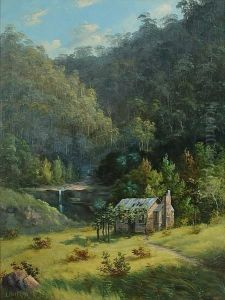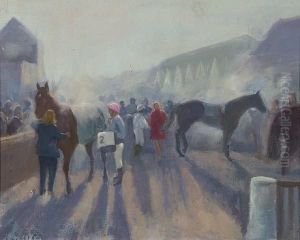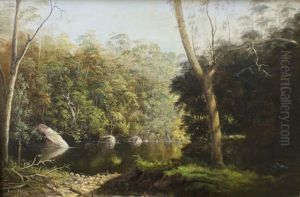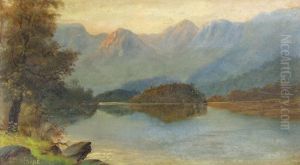Louis Frank Paintings
Louis Frank was a Belgian artist, born in Ixelles in 1874. He is known for his work as a painter, watercolorist, and draftsman within the Impressionist and Post-Impressionist movements. Frank's artistic journey began at a young age when he showed an affinity for the arts. He went on to study at the Académie Royale des Beaux-Arts in Brussels, where he honed his skills and developed a distinctive style that would later define his career.
During his lifetime, Louis Frank was part of the vibrant European art scene. He was influenced by the works of the French Impressionists, which is evident in his use of light and color. Frank was particularly skilled in landscapes and portraits, capturing the essence of his subjects with a delicate and nuanced approach. His landscapes often depicted the Belgian countryside, characterized by a harmonious blend of naturalism and a subtle play of light, showcasing the beauty of the rural settings.
In addition to his landscapes, Frank also created a series of portraits that provide insight into the society of his time. His portraiture work demonstrates his ability to capture the character and mood of his sitters. Despite the influence of Impressionism, Frank maintained a certain degree of realism in his portraits, ensuring that each work conveyed a sense of the individual's personality.
Throughout his career, Louis Frank exhibited his works in various salons and galleries, gaining recognition and respect from his peers and art enthusiasts. His contributions to the art world were not limited to his own creations; he was also active in supporting the arts community and fostering the development of young artists.
Louis Frank's life and career were disrupted by the onset of World War II. The war years were a difficult period for many artists, and Frank was no exception. The art market suffered, and the opportunities to exhibit and sell works were greatly diminished. Despite these challenges, Frank continued to produce art until his death in 1945.
Louis Frank's legacy is that of a dedicated artist who captured the essence of Belgian Impressionism and Post-Impressionism. His works are part of various collections and continue to be appreciated for their beauty and historical value. He remains a significant figure in the history of Belgian art, celebrated for his contribution to the cultural heritage of his country.




